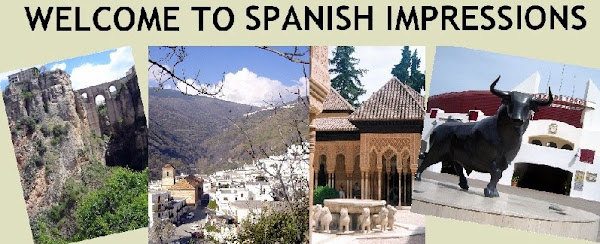by Robert Bovington
Córdoba was once the most important city in Europe. It was the centre of the medieval Caliphate of Córdoba and capital of the western Islamic Empire. It reached its peak in the 10th century when it rivalled Baghdad and Constantinople as one of the great cities of the World. Its greatest surviving monument to the city's magnificent past is its Grand Mosque – the Mezquita.
Córdoba was once the most important city in Europe. It was the centre of the medieval Caliphate of Córdoba and capital of the western Islamic Empire. It reached its peak in the 10th century when it rivalled Baghdad and Constantinople as one of the great cities of the World. Its greatest surviving monument to the city's magnificent past is its Grand Mosque – the Mezquita.
 |
| Córdoba Mezquita © Robert Bovington |
Work on the mosque actually started in 786 when it was built on the site of an old Visigothic church. However, it was enlarged three times before reaching its present size in 987 when it became the largest sacred building in the Islamic world.
And big it most certainly is - so massive that a Gothic cathedral was built inside the mosque - and lots of chapels!
Following the Christian Reconquest of Córdoba in 1236, the mosque was consecrated as a Christian cathedral. During the 14th century, the Villaviciosa Chapel and the Capilla Real were built and then in 1523, work on the cathedral started with the building of a huge nave inside the mosque.
The interior of the mosque is spectacular – a forest of pillars and arches. 856 of the granite, jasper and marble columns remain – some were removed to make way for the Christian parts of the building. Horseshoe-shaped arches consisting of alternating red brick and white stone were placed above the lower pillars, which has given the Mezquita its distinctive character.
 |
| Córdoba Mezquita © Robert Bovington |
Of course, there is much more to this magnificent building than pillars and arches! The Mihrab is particularly magnificent with its intricately carved marble ceiling and exquisitely decorated chambers with their Byzantine mosaics. All this ornamentation is in great contrast to the worn flagstones – an indication that many Muslims prayed here.
The Villaviciosa and Capilla Real chapels are both quite splendid and are good examples of Mudéjar architecture.
There used to be many entrances into the mosque but nowadays, the only one open to the public is the Puerta del Perdón.
No self-respecting mosque should be without a patio where prospective worshippers can perform their ritual ablutions. The Patio de los Naranjos was used for this purpose. Visitors still pass through this delightful courtyard with its orange trees and fountains on their way into the Mezquita.
 |
| Patio de los Naranjos © Robert Bovington |
The minaret of the mosque is no longer visible. It is enveloped in a Baroque bell tower – the Torre del Alminar.
 |
| Torre del Alminar © Robert Bovington |
Finally, there is the Cathedral. Charles V later regretted the decision to build it within the Mezquita and many people since have agreed that its construction has devalued the mosque’s simple beauty. Nevertheless, the Cathedral has many impressive features, particularly the choir with its Baroque mahogany choir stalls that were carved by Pedro Duque Correjo in the 18th century.
 |
| Mezquita Cathedral - part of the choir © Robert Bovington |
Anything this special ought to be afforded special protection and it is – UNESCO has declared the Mezquita a World Heritage site.
more blogs by Robert Bovington...
"Photographs of
| |
"postcards from
| |
"you couldn't make it up!"
| |
"a grumpy old man in
| |
"bits and bobs"
| |
"Spanish Expressions"
| |
"Spanish Art"
| |
"Books About
|




















